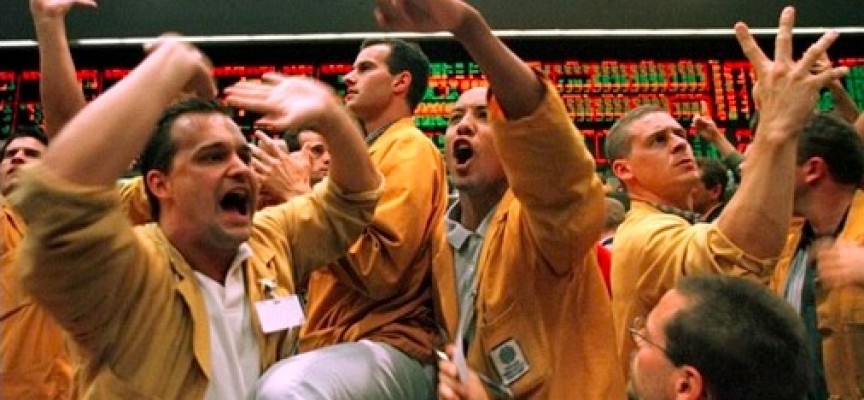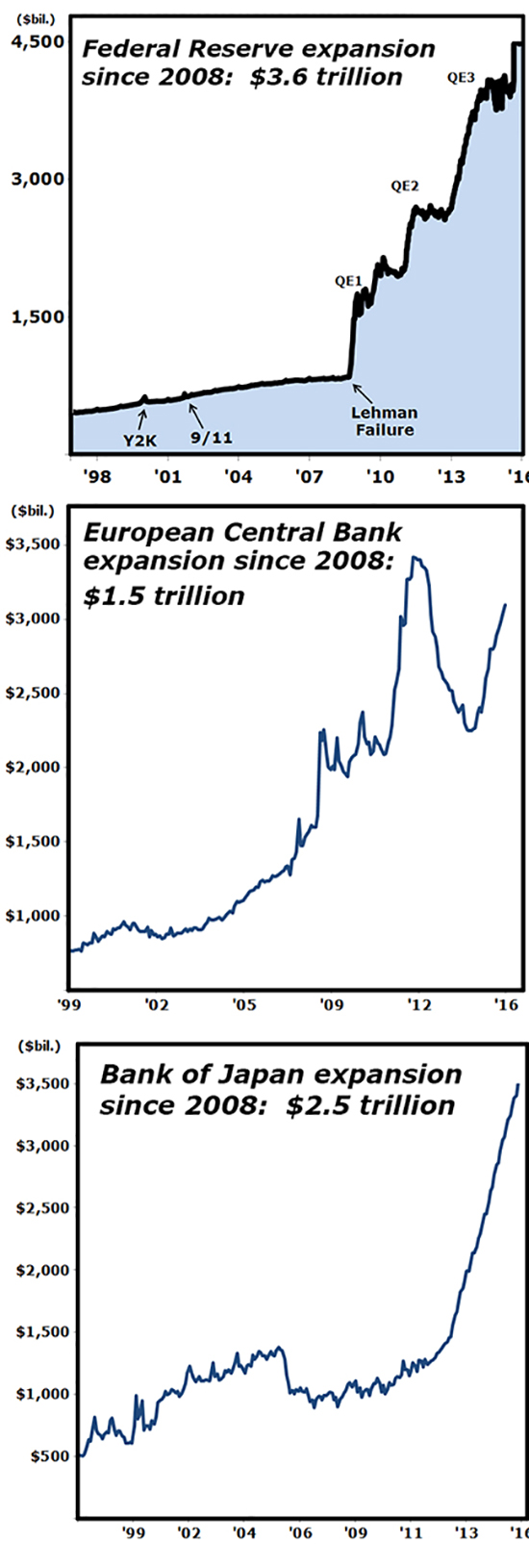
 Question: If there’s another financial catastrophe, can the government save the day again?
Question: If there’s another financial catastrophe, can the government save the day again?
Until recently, nearly all experts would have responded with a stubborn “yes.” They used to think that the Fed and the Treasury, along with their cohorts overseas, could simply spend, print and pump as much money as needed to avoid another global meltdown.
Now, though, they’re not so sure. And some astute analysts are saying the true answer is a flat “no.”
I’ll tell you who in just a moment. But first, I want you to remember one thing: Over the last two weeks, I’ve shown you precisely how to achieve maximum protection from such a disaster. I gave you 5 ETFs for Protection in Another 2008 and my 7-Step Portfolio Protection Strategy.
Today, I’m taking this story one step further. I will show precisely why you can’t rely on anyone else — especially the government — to provide that kind of protection for you. If you want it, you must build it yourself.
The Pundits Throw in the Towel
Let’s not forget who these experts are: They’re the same guys who swore on a stack of Bibles that the almighty Fed would always keep the economy afloat.
Now, however, Barron’s writes, “Based on what is happening in global markets today, central banks won’t be able to ride to the rescue this time.” The Telegraph declares that “the lifeboats are all used up.” And most seem to agree that the next big government rescue could fail — or even fail to materialize — for three reas
 Reason #1. The central banks’ latest weapon of mass desperation — below-zero interest rates — could cause more fright that fight … and more market panic than market rally.
Reason #1. The central banks’ latest weapon of mass desperation — below-zero interest rates — could cause more fright that fight … and more market panic than market rally.
Barron’s put it succinctly…
“Negative interest rates are a sign of desperation, a signal that traditional policy options have proved ineffective and new limits need to be explored.”
Reason #2. Instead of prodding banks to make more loans, below-zero interest rates will kill bank profit margins and prod banks to make fewer loans. Instead of easy money, they’ll bring tighter money.
Reason #3. Bank share prices will plunge, weaker banks will go bankrupt and the whole rescue scheme of recent years will backfire.
How big is that scheme? Brace yourself for the answer …
Since the Big Bang of all financial disasters — the collapse of Lehman Brothers on Sept. 15, 2008 — central banks have been expanding their rescue mission at a mind-boggling pace, creating a whole new universe of monetary excess.
The U.S. Federal Reserve went stark, raving mad, abandoning any semblance of restraint, and expanding its assets by a mammoth $3.6 trillion.
Two prior emergency expansions — on the eve of the Y2K turnover and immediately after the terrorist attacks of 9/11 — were minuscule by comparison.
And in just a matter of weeks, all the rule books of Fed policy, written by generations of Fed chairmen, were dumped into the Potomac River.
A set of completely new rules was created on the fly.
And quantitative easing (QE) was born.
The European Central Bank immediately followed in the Fed’s footsteps, expanding their assets by $1.5 trillion.
At one point, they also tried massive lending to banks in a different form, which temporarily replaced their central bank expansion. But now they’ve resumed their quantitative easing, throwing in below-zero interest rates for extra measure.
The Bank of England, although smaller, was equally aggressive, expanding its balance sheet by $435 billion since 2008.
After the Lehman Brothers failure, their money printing went ballistic; and during the European debt crisis, it went ballistic again.
Now it’s on hold temporarily. But the $435 billion in new money is locked in place with no sign whatsoever of retreat.
If you think all of the above is crazy, wait till you see what the Bank of Japan has done:
Since the Lehman Brothers blow-up in 2008, the BOJ has expanded its balance sheet by a whopping $2.5 trillion.
Adjusted for the smaller size of Japan’s economy, that’s the equivalent of a $9.4 trillion expansion in the United States, or more than 2½ times more than the Fed’s.
Even excluding all the other central banks of the world, this big-bang expansion is absolutely unprecedented in all of recorded history:

The Fed’s $3.6 trillion … PLUS … the Bank of England’s $435 billion … PLUS … the European Central Bank’s $1.5 trillion … PLUS the Bank of Japan’s $2.5 trillion … add up to a grand total of more than 8 trillion dollars in monetary expansion just since the Lehman Brothers big bang.
This $8-trillion monster is what had been fueling all the government rescues since the 2008 debt crisis.
This is what’s not working anymore.
This is fundamentally what the experts are now so worried about.
And this is why you need your own portfolio defenses.
Whatever you do, don’t get caught off guard.
Good luck and God bless!
Martin
Dr. Weiss founded Weiss Research in 1971 and has dedicated the past 40 years to helping millions of average investors find truly safe havens and investments. He is president of Weiss Ratings, the nation’s leading independent rating agency accepting no fees from rated companies. And he is the chairman of the Sound Dollar Committee, originally founded by his father in 1959 to help President Dwight D. Eisenhower balance the federal budget. His last three books have all been New York Times Bestsellers and his most recent title is The Ultimate Money Guide for Bubbles, Busts, Recesssion and Depression.












